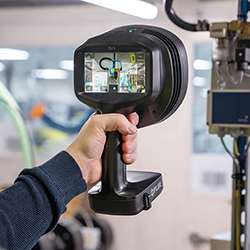4D-Printed Concept Car Will Predict Your Wishes
Plattform Industrie 4.0 and Industrial Internet Consortium Agree on Cooperation
Mobile Robotic Fabrication System for Filament Structures
Patent Deployment in Smart Manufacturing
2016: Why Manufacturers Should Embrace Real-Time Data
Automotive Industry 4.0 - Disrupting the Industry?
3D Printing - Is this the Next Wave of Technology?
Boomers at Work: Retirement vs. Working … It's Complicated
A New Boeing Patent Describes Levitating 3D Printing
New Materials for Manufacturing: The Economist's Overview For 2015
Collaborative Robots Working In Manufacturing
Samsung to provide 'smart factory' solution in South Korea
Three-Step Verification for Lean Product Labeling
NASA, Made in Space think big with Archinaut, a robotic 3D printing demo bound for ISS
Republican-Leaning Cities Are At Greater Risk Of Job Automation
Records 2686 to 2700 of 2895
First | Previous | Next | Last
Featured Product

